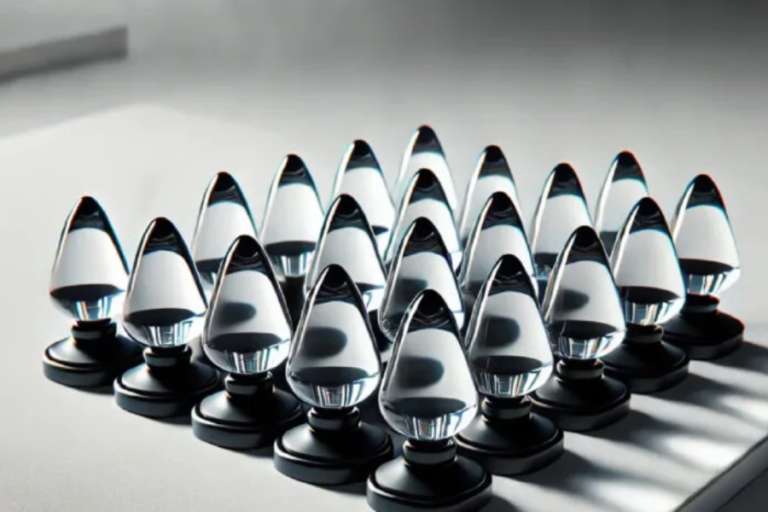Unlocking the Power of Codigo de Barras Perfume: Beyond the Barcode
Have you ever paused to consider what lies beyond the elegant packaging of your favorite fragrance? While the enchanting aroma certainly plays a significant role in our choice of perfume, an innovative technology—Codigo de Barras Perfume, or perfume barcodes—serves as an unsung hero in the fragrance industry. These seemingly simple barcodes are packed with a wealth of information, influencing everything from authenticity to consumer trust. Join us as we delve into the fascinating realm of perfume barcodes, exploring their history, significance, and the future trends that will continue to shape this unique intersection of technology and artistry.
History and Evolution: From Concept to Revolution
The use of barcodes in the retail sector may seem like a recent development, but the origins of perfume barcodes can be traced back several decades. Initially, barcodes were designed to streamline the checkout process in grocery stores and retail environments. However, their potential for traceability and quality assurance soon attracted the attention of the fragrance industry, paving the way for a transformative shift.
The Visionary Shift
The early adopters of perfume barcodes recognized their potential beyond operational efficiency. Luxury fragrance brands began to understand that these codes could enhance consumer trust and authenticate their products. By embedding barcodes with detailed product information, these brands could create an unbroken chain of data from manufacturing all the way to the consumer’s hands. This vision marked a significant turning point in how the fragrance industry approached product transparency.
Key Milestones
A pivotal moment in the evolution of perfume barcodes was the introduction of the Universal Product Code (UPC) in the 1970s. This standardized system brought uniformity to various products and industries, including perfumes. Over the years, the fragrance sector transitioned to more advanced barcode types, such as QR codes. These codes can store significantly more data and create interactive experiences for consumers, thus enhancing engagement and information access.
Understanding Perfume Barcodes: A Peek into the Digital DNA
You’ve likely encountered barcodes on countless products, but do you know what information they encode, particularly in the realm of fragrances? Let’s take a closer look.
The Information Encoded
A perfume barcode acts as a digital fingerprint, encoding vital details such as the country of origin, manufacturer, specific product characteristics, and, in some cases, batch numbers and production dates. This wealth of information creates a comprehensive overview of the product’s journey from creation to sale.
The Importance of Traceability
In an industry where authenticity is paramount, traceability is crucial. Perfume barcodes ensure that every bottle can be traced back to its source, acting as a deterrent against counterfeit products and guaranteeing quality. This level of transparency benefits both consumers and brands, reinforcing trust and credibility.
Quality Assurance
Maintaining a detailed record of each batch allows manufacturers to quickly identify and address any issues that may arise. This proactive approach not only enhances consumer confidence but also preserves the brand’s reputation for excellence. In an age of information, the ability to trace a product’s history contributes significantly to its perceived value.
Decoding the Craft: The Artisan Touch in Every Bottle
Creating a luxurious perfume is an intricate art form, and the barcode system plays an essential role in safeguarding this artistry.
Chronology of Production
Perfume barcodes often contain production dates, allowing consumers to trace the lifecycle of their fragrance. This feature is especially crucial for ensuring the freshness and potency of the scent, as consumers want to experience a perfume at its best.
Batch Numbers and Transparency
Each batch of perfume carries unique characteristics, and barcodes document these differences. Whether it’s a limited edition or a seasonal release, the barcode provides a transparent account of its production history. This not only reassures consumers about the quality but also adds an element of storytelling to the fragrance.
Consumer Trust
In a market flooded with counterfeit products, barcodes serve as a vital seal of authenticity. By scanning a barcode, consumers can verify the legitimacy of their purchase, fostering trust and loyalty towards the brand. This added layer of security makes consumers feel more connected to their favorite fragrances.
Trends and Future Outlook: The Next Frontier
The world of Codigo de Barras Perfume is continuously evolving, driven by technological advancements and shifting consumer preferences.
Current Trends
Today, barcodes are no longer limited to simple lines of black and white. Innovations such as QR codes and Near Field Communication (NFC) technology have transformed barcodes into interactive tools. Consumers can now scan a barcode to access detailed product information, user reviews, and even participate in virtual try-ons. This interactive element enhances the shopping experience, making it more engaging and informative.
The Global Impact
As the fragrance market continues to expand globally, the significance of standardized barcode systems becomes increasingly pronounced. Emerging markets are adopting advanced barcode technologies to ensure compliance with international quality standards. This trend not only supports local businesses but also enhances global trade in the fragrance industry.
Future Speculations
Looking ahead, the integration of artificial intelligence (AI) and blockchain technology with perfume barcodes could revolutionize the industry. Imagine a barcode that not only provides comprehensive product information but also verifies the ethical sourcing of ingredients and tracks the carbon footprint of each bottle. Such innovations would cater to the growing consumer demand for sustainability and transparency, making it an exciting time for the fragrance industry.
Conclusion: “Codigo de Barras Perfume”
As we’ve explored, perfume barcodes transcend their role as mere functional tools—they are the guardians of quality, authenticity, and trust in the fragrance industry. From their humble beginnings to their current advanced iterations, these barcodes have significantly influenced consumer experiences and brand reputations. With technology continually advancing, the future of Codigo de Barras Perfume promises even greater innovations, ensuring that the art of scent remains a harmonious blend of tradition and modernity.
FAQs
What exactly is a Codigo de Barras Perfume?
A Codigo de Barras Perfume is a barcode specifically designed for perfumes, encoding various details about the product, including its origin, manufacturer, and batch number.
Why are perfume barcodes important?
Perfume barcodes are crucial for ensuring authenticity, traceability, and quality assurance. They help prevent counterfeiting and provide consumers with detailed product information.
How do perfume barcodes enhance consumer trust?
By offering a transparent account of a product’s journey from production to purchase, perfume barcodes foster consumer trust and loyalty.
What information is typically included in a perfume barcode?
A perfume barcode usually includes details such as the country of origin, manufacturer, production dates, and batch numbers.
Are perfume barcodes used globally?
Yes, perfume barcodes are utilized globally. Standardized systems like UPC and advanced technologies such as QR codes ensure uniformity and quality across international markets.
Stay in touch to get more news & updates on info discovers.






